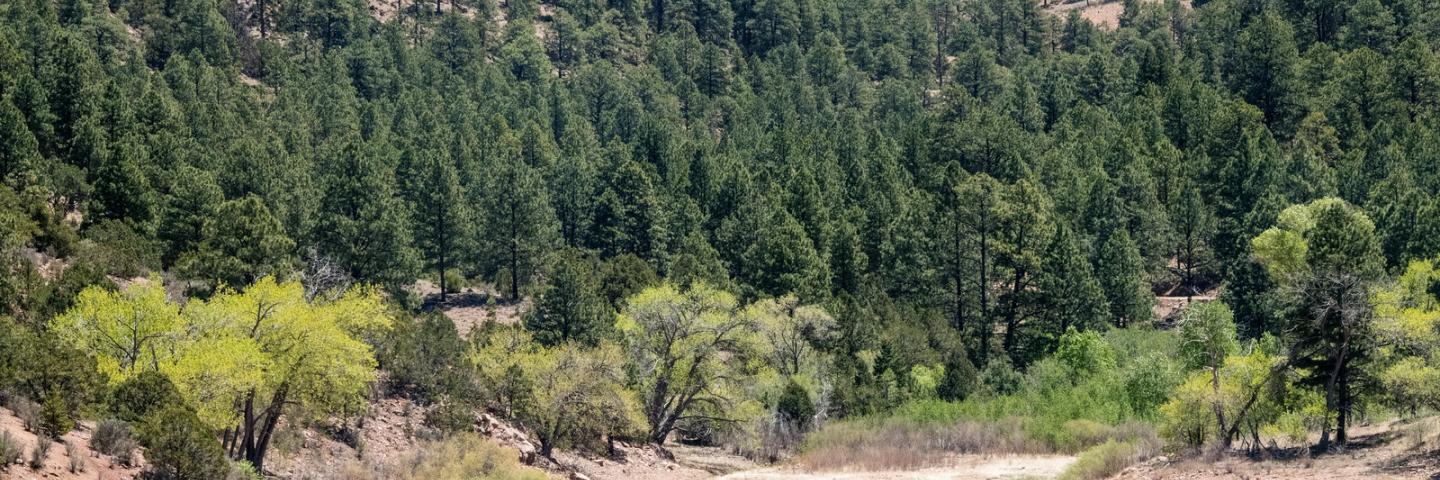USDA Announces 2021 Priority Watersheds for Water Quality in Oregon

The U.S. Department of Agriculture (USDA) has named 379 priority watersheds to help agricultural producers improve water quality across the country.
PORTLAND, Ore. (Oct. 22, 2020) – The U.S. Department of Agriculture (USDA) has named 379 priority watersheds to help agricultural producers improve water quality across the country. In Oregon, producers within targeted watersheds will receive focused financial and technical resources through USDA’s Natural Resources Conservation Service’s (NRCS) National Water Quality Initiative (NWQI).
“We see a positive impact – both here in Oregon and across the country – when we partner with producers to deliver conservation practices to critical watersheds,” said Jason Jeans, Acting NRCS state conservationist in Oregon. “These focused partnerships allow us to maximize the delivery of our conservation efforts and achieve greater improvements to water quality, which benefits the participating producers, the public, and our nation’s natural resources.”
NWQI was initiated in 2012 to address agricultural contributions to surface waters impaired by nutrients, sediment, and pathogens. Since then, priority watersheds across the country have seen improvements, including the delisting of once impaired streams.
The technical and financial assistance from NRCS assists farmers and ranchers with implementing practices that avoid, control, and trap nutrients and sediment, which can negatively impact water quality. Practices include filter strips, cover crops, and manure management, which promote soil health, reduce erosion, and lessen nutrient runoff.
National Water Quality Initiative in Oregon
NWQI is a partnership among NRCS, state water-quality agencies including Oregon Department of Environmental Quality, Oregon Health Authority and the U.S. Environmental Protection Agency to identify and address impaired surface water bodies through voluntary conservation. Through NWQI, NRCS provides targeted funding for financial and technical assistance to help farmers and ranchers apply conservation practices to protect water resources. NWQI includes protection for both surface and ground sources of drinking water. There are 24 source water protection projects, including 10 in Oregon.
A total of 175 watersheds – including 8 in Oregon – will be receiving financial assistance for practice implementation to address impaired surface waters. Additionally, 209 watersheds – including 11 in Oregon – will be conducting watershed assessments.
NRCS expanded the scope of NWQI in 2019 to include source water protection for community drinking water systems. Oregon conservation partners responded by submitting 5 proposals in the state, all of which were selected by USDA to undergo a planning phase. In 2020, an additional 5 proposals were selected by USDA. Conservation partners in 4 communities selected in 2020 were added to the “planning phase,” which includes developing a detailed watershed assessment and an outreach strategy to agricultural producers. Following the planning phase, these SWPAs would then be eligible to receive federal Farm Bill funding to implement the measures identified in their plans specific to agricultural impacts.
Newly approved NRCS NWQI projects for 2021 include planning phase assessments in:
- Selected sub-Basins within the Trout Creek watershed in Jefferson and Wasco Counties.
- The Siletz Drinking Water Source Area serving over 40% of the population in Lincoln County. Four communities in Lincoln County rely on the Siletz River at least a portion of the year for drinking water. These include Newport, Toledo, Seal Rock, and Siletz.
In addition, the following watersheds in Klamath County were selected for their second year of implementation phase funding:
- Miller Creek
- Woolen Canyon – Lost River
- Rocky Canyon Creek
- Cys Branch – Lost River
- Middle Buck Creek
- Wildhorse Creek
- Lower buck Cree-Lost River
- Alkali Lake – Lost River
NRCS encourages state partners to begin collaboration on NWQI priorities for Federal Fiscal Year 2022, which begins on October 1, 2021. See the NRCS website for a list of the watersheds for NWQI.
Water quality is improving in NWQI watersheds. State water-quality agency partners report that 27% of NWQI monitoring watersheds show an improvement in water quality in at least one of the NWQI-monitored pollutants (based on 2016 data). Further, 81% of these improvements can be attributed to or associated with agricultural conservation practices implemented by farmers and ranchers.
Since its launch, NWQI has:
- Helped producers implement conservation on over 960,000 acres
- Reduced sediment loss by almost 1 million tons
- Reduced phosphorous loss by 2.5 million pounds
- Reduced nitrogen loss by 11 million pounds
Participating in NWQI
NRCS accepts applications for conservation programs year-round, but applications are ranked and funded by enrollment periods that are set locally. Producers interested in technical and financial assistance should contact their local NRCS field office.
For more information on landscape initiatives in Oregon, visit www.or.nrcs.usda.gov or contact your local NRCS field office.
###

